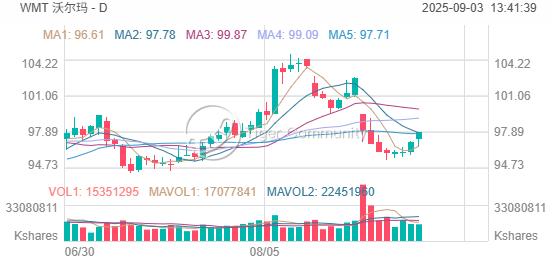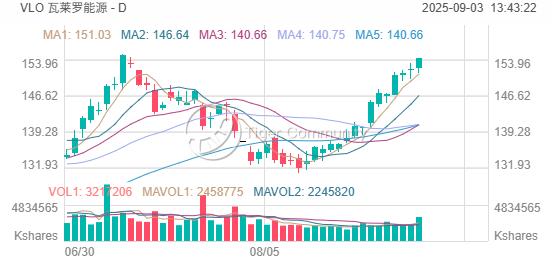Goldman Sachs adds Walmart and Valero Energy to its September "Conviction List," along with these other companies
Goldman Sachs has added four new stocks to its Conviction List in September, including some of the most well-known American brands as well as several energy stocks.
These stocks have been included in the investment bank’s “Conviction List - Directors’ Cut,” a list that brings together companies rated as “Buy” by Goldman Sachs. As part of its routine monthly adjustment, Goldman Sachs’ top stock picks for September include: McDonald’s, Walmart, Cadence Design Systems, and Valero Energy.
Meanwhile, two stocks have been removed from the list: Viper Energy Partners LP and Insmed. However, Goldman Sachs pointed out that removal from the list does not necessarily mean a change in its fundamental investment rating for those stocks.
Currently, Goldman Sachs’ Conviction List contains a total of 22 stocks, covering sectors such as healthcare, finance, natural resources, industrials, consumer, and telecommunications. Goldman Sachs considers these companies attractive investments based on multiple indicators, including revenue growth and current dividend yield.
Companies on the list include Johnson & Johnson, Bank of America, and AT&T. Some companies have performed exceptionally well, such as Alnylam Pharmaceuticals, whose stock price has nearly doubled this year (up 92%); GE Vernova Inc. has also risen by about 75%.
This updated list comes as Goldman Sachs closely monitors the health of the U.S. labor market, the progress of inflation, and the commercialization of artificial intelligence—all factors that could threaten the rally in U.S. stocks since the April lows. In a client report on Tuesday, the team led by Goldman Sachs analyst Steven Kron wrote that multiple headwinds “continue to weigh on market sentiment—but these may instead form a ‘wall of worry’ that provides a foundation for further stock market gains.”
Newly Added Stocks
Walmart
Goldman Sachs has set a price target of $114 for Walmart, implying an 18% upside for the largest retailer in the U.S. So far this year, the stock has risen 8%.

Analyst Kate McShane wrote: “Walmart, with its ‘Everyday Low Price’ strategy, is expected to continue gaining market share even as the retail environment faces rising product costs due to new tariffs.” She added that Walmart’s strong presence in food and low-priced apparel makes it “one of the most advantaged retailers,” as both categories tend to be relatively resilient in recessionary scenarios.
Goldman Sachs’ “Buy” rating on Walmart is in line with the overall Wall Street view. According to LSEG data, out of 44 analysts, 14 have given a “Strong Buy” rating and 29 have rated it as a “Buy.”
Valero Energy
As a refining company, Valero’s stock price has risen about 25% this year and offers a dividend yield of around 3%. Goldman Sachs believes there is still 7% upside potential for its stock price.

Analyst Neil Mehta stated that San Antonio-based Valero will benefit from a “structural upcycle in refining.” He holds a constructive view on the refining industry due to increased OPEC supply and Valero’s commitment to cash flow generation.
Disclaimer: The content of this article solely reflects the author's opinion and does not represent the platform in any capacity. This article is not intended to serve as a reference for making investment decisions.
You may also like
After bitcoin returns to $90,000, is Christmas or a Christmas crash coming next?
This Thanksgiving, we are grateful for bitcoin returning to $90,000.

Bitcoin security reaches a historic high, but miner revenue drops to a historic low. Where will mining companies find new sources of income?
The current paradox of the Bitcoin network is particularly striking: while the protocol layer has never been more secure due to high hash power, the underlying mining industry is facing pressure from capital liquidation and consolidation.

What are the privacy messaging apps Session and SimpleX donated by Vitalik?
Why did Vitalik take action? From content encryption to metadata privacy.

The covert war escalates: Hyperliquid faces a "kamikaze" attack, but the real battle may have just begun
The attacker incurred a loss of 3 million in a "suicidal" attack, but may have achieved breakeven through external hedging. This appears more like a low-cost "stress test" targeting the protocol's defensive capabilities.

